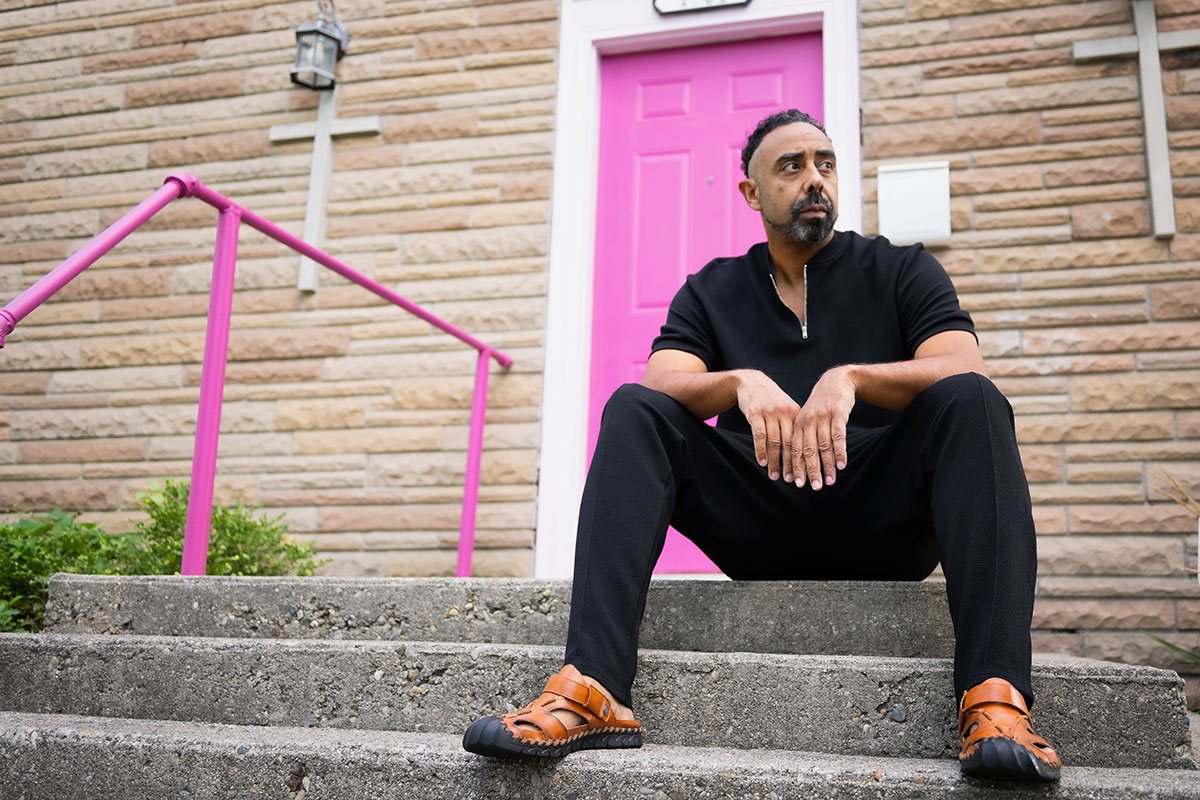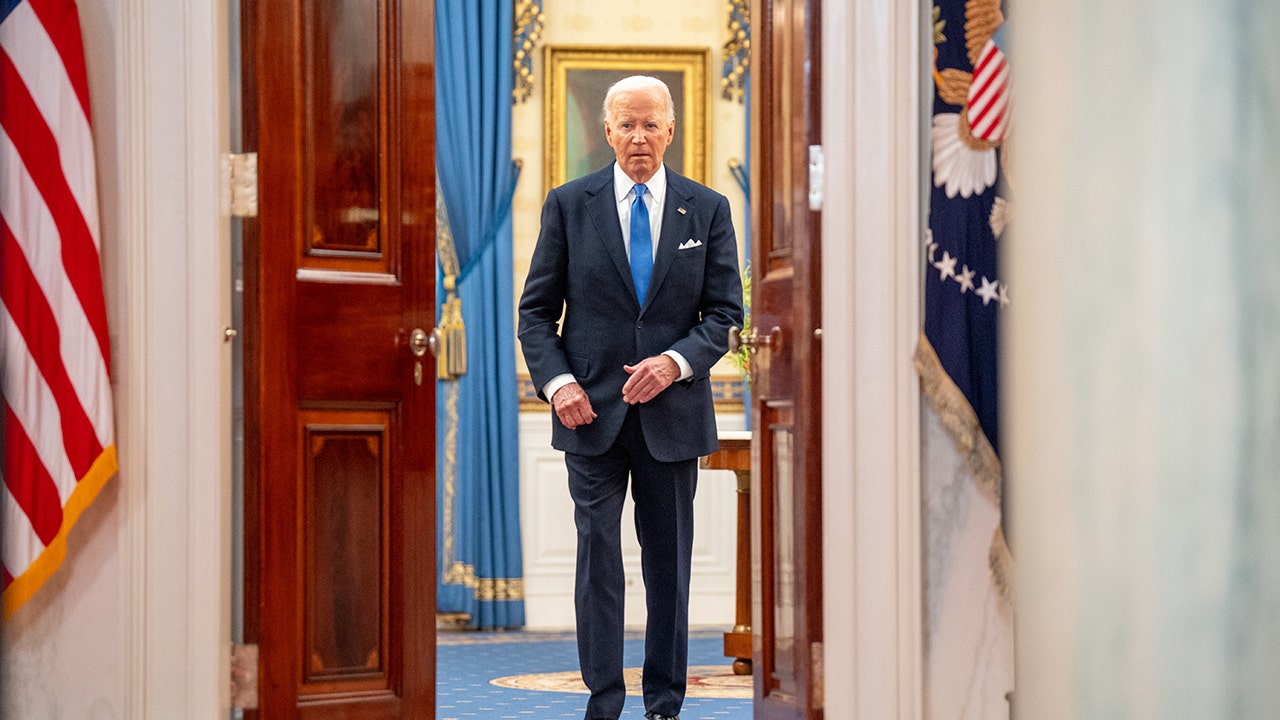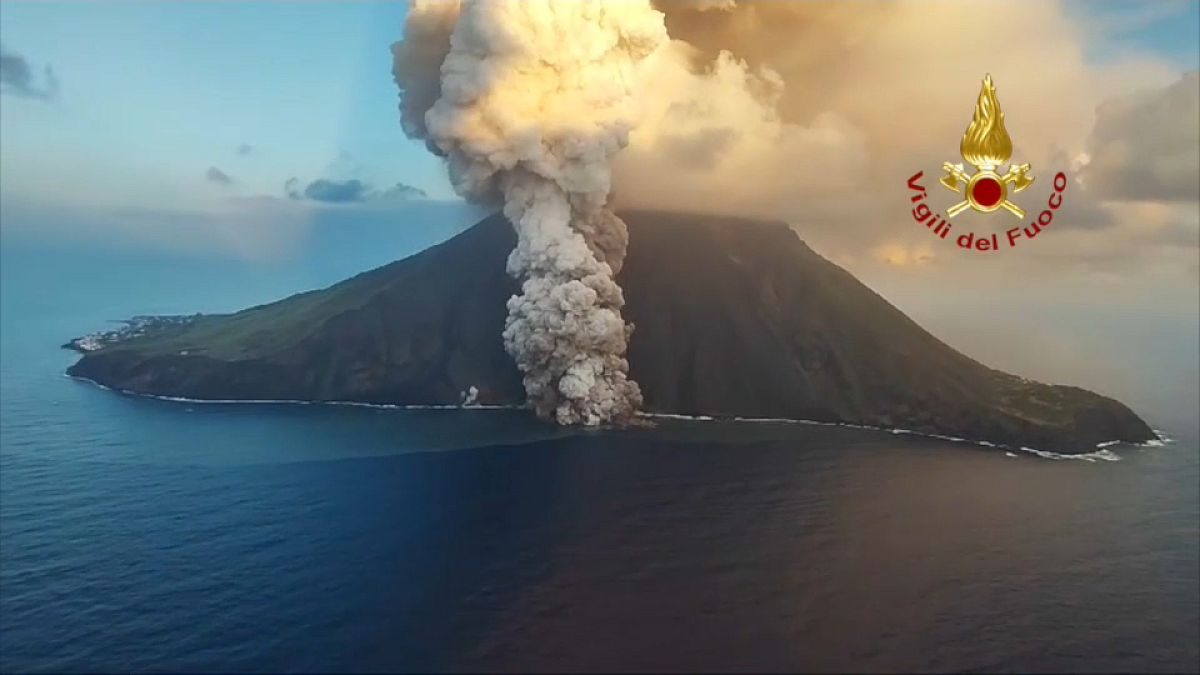New York
How New York Lost and Regained Control of Union Square

About 12:30 p.m. Friday, the New York Police Department’s entertainment unit saw that Kai Cenat, a social-media streamer who has more than 6 million followers, had said that he would be in Manhattan’s Union Square that day, ready to give away free PlayStation 5 consoles and other prizes to fans who showed up.
The local precinct sent a few officers and supervisors. By 1:30 p.m., there were about 300 fans in Union Square.
“Not a big crowd,” Jeffrey Maddrey, the chief of the department, said at a news conference on Friday. “Something we’d expect for a social media event like this.”
The crowd grew. Fast.
Soon, there were about 6,000 people massed in Union Square. Chaos ensued: Fans of Mr. Cenat darted in and out of traffic, climbing on the hoods of cabs and other cars. Others clambered up lampposts and traffic signs, toppled trash cans or threw objects at police officers. Several set off firecrackers, sending throngs of people running. The swarm spilled out onto Broadway, Park Avenue and other neighboring streets to the north, south, west and east.
By the end of the afternoon, at least 66 people — about half of them minors — had been arrested. Mr. Cenat, who had tried to flee the giant crowd in a black SUV, was charged with inciting a riot, among other offenses. By 6 p.m., the crowd had dispersed but questions remain over how it grew so large and dangerous.
The charges against the crowd included disorderly conduct; unlawful assembly; resisting arrest; inciting to riot; riot; obstruction of governmental administration; failure to disperse; and criminal possession of a weapon.
On Monday evening, a statement from Mr. Cenat’s Any Means Possible group said no one had anticipated the scale of the event and that they were “deeply disappointed by the outbreak of disorderly conduct.” But how might the mayhem been avoided?
Where did this crowd come from?
Mr. Cenat, 21, has developed a huge following thanks to his high-energy videos on YouTube and Twitch, a livestreaming service where he is among the most watched.
He has posted shakily filmed clips of himself shopping in Tokyo, buying his mother a house and fleeing enormous snakes. He also livestreams himself playing video games with rappers, and has shared a video where he goes to dorms and asks college students if he can spend the night in their rooms.
Mr. Cenat, who is from the Bronx, told his Twitch followers on Wednesday that he would be in Union Square on Friday. He asked how many fans would show up.
A flurry of answers came in: 1,000, 5,000, 10,000. A friend sitting next to him said so many would come that Mr. Cenat would need security and barricades.
“All trains go here so there’s no excuse,” Mr. Cenat told those watching. “I love you all so much, bro.”
Word spread, and his followers flocked to Union Square.
How are police supposed to respond?
Most event organizers obtain city permits so that law enforcement can close streets and create access points. Mr. Cenat did not notify authorities or get a permit, Chief Maddrey said.
When a crowd surges, the police can activate what they call a rapid mobilization, designating an emergency that requires swift backup, according to the Police Department patrol guide.
On Friday, officials called in a level-four mobilization — the most urgent. Soon after, hundreds of officers including members of specialty units like the counterterrorism bureau and the strategic response group swooped in.
Officers in tactical gear formed lines to herd people out, as a loudspeaker told the crowd to get out of the area. “If you leave voluntarily, no charges will be placed against you,” they said in a message played over a loudspeaker. “If you refuse to leave, you will be arrested for unlawful assembly.”
That kind of response is necessary, said Brian Higgins, a security and public safety consultant and former chief of the Bergen County, N.J., police department.
A crowd as large and rowdy as Friday’s is “extremely dangerous,” said Mr. Higgins, an adjunct professor at John Jay College of Criminal Justice, threatening a deadly crush, he said.
“When it gets to that point,” Mr. Higgins said, “it really has to be brought down with force.”
Were the police too aggressive?
A video with more than 2.2 million views on Twitter shows a disturbing encounter from Friday: A young man in a red sweatshirt stands looking confused as a crowd flees approaching officers. Two officers grab the man and hurl him at the rear of the taxi. His head hits the broken window, and he is placed under arrest.
The police said the incident is under review.
The Civilian Complaint Review Board, an independent agency that investigates police misconduct, said it was looking into four incidents, including the arrest of the man in the sweatshirt, according to a spokeswoman.
Edwin Raymond, who retired as a lieutenant this past spring, said officials should review their response. Rather than arrest Mr. Cenat immediately, for example, the police could have used him to address the crowd, he said.
“The minute that the N.Y.P.D. moved Kai Cenat from the scene, they lost their chance to leverage him,” Mr. Raymond said.
Chief Maddrey said officers showed restraint dealing with people, many of them minors, who destroyed police vehicles, including his own. Officers escalated force in proportion with the crowd’s behavior, said Chief Maddrey, who described getting hit in the head with an object.
“We had to be very, very delicate in how we handled this,” he said. “We wanted the kids to just comply with us and leave. But we were met with a lot of resistance. We were attacked.”
What lessons should be drawn?
Mayor Eric Adams said young people are “being inundated by influencers.”
“Our children cannot be raised by social media” he said on Saturday at a news conference in Brooklyn. “Our children cannot get their values, their beliefs from social media and other outside entities.”
He also said the event drew people “from outside of the city” and that officials are “looking into where there’s some even outside agitators.”
“You don’t come to get free Game Boys and bring smoke bombs and bring M80s and bring other disruptive items,” Mayor Adams said.
Chief Maddrey said Monday on Fox 5 New York that many parents came to Union Square to see whether their children had been hurt in the melee or arrested.
“We don’t want to touch your children,” he said “We don’t want them to go to jail. We want you to be mom and dad, grandma, uncle. Grab the young person and say, stop it now.”
Mr. Higgins said the blame lies squarely on a social media personality who failed to take the proper steps to ensure a safe event and unruly fans who failed to listen to the police.
“Disperse when you’re told to disperse,” he said.
The police should not underestimate the lure of free goods, Mr. Higgins said. Shirts and hats are not a big deal, Mr. Higgins said. Free game consoles?
“That’s something that should have been picked up on,” he said.
Did anyone get a PlayStation 5?
As of Monday afternoon, it was unclear whether any fans received the prizes Mr. Cenat had offered.

New York
We Counted 22,252 Cars to See How Much Congestion Pricing Might Have Made This Morning

Today would have been the first Monday of New York City’s congestion pricing plan. Before it was halted by Gov. Kathy Hochul, the plan was designed to rein in some of the nation’s worst traffic while raising a billion dollars for the subway every year, one toll at a time.
A year’s worth of tolls is hard to picture. But what about a day’s worth? What about an hour’s?
To understand how the plan could have worked, we went to the edges of the tolling zone during the first rush hour that the fees would have kicked in.
Here’s what we saw:
Video by Noah Throop/The New York Times; animation by Ruru Kuo/The New York Times
You probably wouldn’t have seen every one of those cars if the program had been allowed to proceed. That’s because officials said the fees would have discouraged some drivers from crossing into the tolled zone, leading to an estimated 17 percent reduction in traffic. (It’s also Monday on a holiday week.)
The above video was just at one crossing point, on Lexington Avenue. We sent 27 people to count vehicles manually at four bridges, four tunnels and nine streets where cars entered the business district. In total, we counted 22,252 cars, trucks, motorcycles and buses between 8 a.m. and 9 a.m. on Monday.
We wanted to see how the dense flow of traffic into the central business district would have generated money in real time.
Though we can’t know that dollar amount precisely, we can hazard a guess. Congestion pricing was commonly referred to as a $15-per-car toll, but it wasn’t so simple. There were going to be smaller fees for taxi trips, credits for the tunnels, heftier charges for trucks and buses, and a number of exemptions.
To try to account for all that fee variance, we used estimates from the firm Replica, which models traffic data, on who enters the business district, as well as records from the Metropolitan Transportation Authority and city agencies. We also made a few assumptions where data wasn’t available. We then came up with a ballpark figure for how much the city might have generated in an hour at those toll points.
The total? About $200,000 in tolls for that hour.
Note: The Trinity Place exit from the Brooklyn-Battery Tunnel, which would have been tolled, is closed at this hour.
It’s far from a perfect guess. Our vehicle total is definitely an undercount: We counted only the major entrances — bridges, tunnels and 60th Street — which means we missed all the cars that entered the zone by exiting the Franklin D. Roosevelt Drive or the West Side Highway.
And our translation into a dollar number is rough. Among many other choices we had to make, we assumed all drivers had E-ZPass — saving them a big surcharge — and we couldn’t distinguish between transit buses and charter buses, so we gave all buses an exemption.
But it does give you a rough sense of scale: It’s a lot of cars, and a lot of money. Over the course of a typical day, hundreds of thousands of vehicles stream into the Manhattan central business district through various crossings.
Trips into tolling district, per Replica estimates Note: Data counts estimated entrances on a weekday in spring 2023. Source: Replica.
Queens-Midtown Tunnel
50,600
Lincoln Tunnel
49,200
Williamsburg Bridge
27,900
Manhattan Bridge
24,000
Brooklyn-Battery Tunnel
23,100
Queensboro Bridge
21,700
Brooklyn Bridge
17,100
Holland Tunnel
15,400
All other entrances
118,000
Total
347,000
The tolling infrastructure that was installed for the program cost roughly half a billion dollars.
The M.T.A. had planned to use the congestion pricing revenue estimates to secure $15 billion in financing for subway upgrades. Many of those improvement plans have now been suspended.
Methodology We stationed as many as five counters at some bridges and tunnels to ensure that we counted only cars that directly entered the tolling zone, not those that would have continued onto non-tolled routes.
Our count also excluded certain exempt vehicles like emergency vehicles.
We used estimates of the traffic into the district to make a best guess at how many of each kind of vehicle entered the zone. Most of our estimates came from the traffic data firm Replica, which uses a variety of data sources, including phone location, credit card and census data, to model transportation patterns. Replica estimated that around 58 percent of trips into the central business district on a weekday in spring 2023 were made by private vehicles, 35 percent by taxis or other for-hire vehicles (Uber and Lyft) and the remainder by commercial vehicles.
We also used data on trucks, buses, for-hire vehicles and motorcycles from the M.T.A., the Taxi and Limousine Commission and the Department of Transportation.
For simplicity, we assumed all vehicles would be equally likely to enter the zone from 8 a.m. to 9 a.m. as they would be in any other hour. We could not account for the other trips that a for-hire vehicle might make once within the tolled zone, only the initial crossing. And we did not include the discount to drivers who make under $50,000, because it would kick in only after 10 trips in a calendar month.
New York
Transcript of Trump Manhattan Trial, May 30, 2024

-
Jury Deliberation Re-charge
SUPREME COURT OF THE STATE OF NEW YORK
COUNTY OF NEW YORK CRIMINAL TERM
-
-
PART: 59
Χ
THE PEOPLE OF THE STATE OF NEW YORK,
-against-
DONALD J. TRUMP,
DEFENDANT.
BEFORE:
Indict. No.
71543-2023
CHARGE
4909
FALSIFYING BUSINESS
RECORDS 1ST DEGREE
JURY TRIAL
100 Centre Street
New York, New York 10013
May 30, 2024
HONORABLE JUAN M. MERCHAN
JUSTICE OF THE SUPREME COURT
APPEARANCES:
FOR THE PEOPLE:
ALVIN BRAGG, JR., ESQ.
DISTRICT ATTORNEY, NEW YORK COUNTY
One Hogan Place
New York, New York 10013
BY:
JOSHUA STEINGLASS, ESQ.
MATTHEW COLANGELO,
ESQ.
SUSAN HOFFINGER, ESQ.
CHRISTOPHER CONROY, ESQ.
BECKY MANGOLD, ESQ.
KATHERINE ELLIS, ESQ.
Assistant District Attorneys
BLANCHE LAW
BY:
TODD BLANCHE, ESQ.
EMIL BOVE, ESQ.
KENDRA WHARTON, ESQ.
NECHELES LAW, LLP
BY: SUSAN NECHELES, ESQ.
GEDALIA STERN, ESQ.
Attorneys for the Defendant
SUSAN PEARCE-BATES, RPR, CSR, RSA
Principal Court Reporter
LAURIE EISENBERG, RPR, CSR
LISA KRAMSKY
THERESA MAGNICCARI
Senior Court Reporters
Susan Pearce-Bates, RPR, CCR, RSA
Principal Court Reporter
New York
Transcript of Trump Manhattan Trial, May 29, 2024

SUPREME COURT OF THE STATE OF NEW YORK
COUNTY OF NEW YORK CRIMINAL TERM
-
THE PEOPLE OF THE STATE OF NEW YORK,
PART: 59
Indict. No.
71543-2023
CHARGE
-against-
DONALD J. TRUMP,
DEFENDANT.
BEFORE:
4815
FALSIFYING BUSINESS
RECORDS 1ST DEGREE
JURY TRIAL
X
100 Centre Street
New York, New York 10013
May 29, 2024
HONORABLE JUAN M. MERCHAN
JUSTICE OF THE SUPREME COURT
APPEARANCES:
FOR THE
PEOPLE:
ALVIN BRAGG, JR.,
ESQ.
DISTRICT ATTORNEY, NEW YORK COUNTY
One Hogan Place
New York, New York 10013
BY:
JOSHUA STEINGLASS, ESQ.
MATTHEW COLANGELO,
ESQ.
SUSAN HOFFINGER, ESQ.
CHRISTOPHER CONROY, ESQ.
BECKY MANGOLD, ESQ.
KATHERINE ELLIS, ESQ.
Assistant District Attorneys
BLANCHE LAW
BY:
TODD BLANCHE, ESQ.
EMIL BOVE, ESQ.
KENDRA WHARTON, ESQ.
NECHELES LAW, LLP
BY: SUSAN NECHELES, ESQ.
Attorneys for the Defendant
SUSAN PEARCE-BATES, RPR, CSR, RSA
Principal Court Reporter
LAURIE EISENBERG, RPR, CSR
LISA KRAMSKY
THERESA MAGNICCARI
Senior Court Reporters
Susan Pearce-Bates,
RPR, CCR, RSA
Principal Court Reporter
-

 Politics1 week ago
Politics1 week agoPopular Republican and Trump running mate contender makes first Senate endorsement in 2024 races
-

 News1 week ago
News1 week agoToplines: June 2024 Times/Siena Poll of Registered Voters Nationwide
-

 Politics1 week ago
Politics1 week agoFox News Politics: Trump Ungagged…Kinda
-

 News1 week ago
News1 week agoIowa floodwaters breach levees as even more rain dumps onto parts of the Midwest
-

 Politics1 week ago
Politics1 week agoMike Kennedy advances past crowded GOP primary to secure nomination for open Utah House seat
-

 Politics1 week ago
Politics1 week agoThe many faces of Donald Trump from past presidential debates
-

 News1 week ago
News1 week agoNew Jersey gamer flew to Florida and beat fellow player with hammer, say police
-

 News5 days ago
News5 days agoVideo: How Blast Waves Can Injure the Brain















